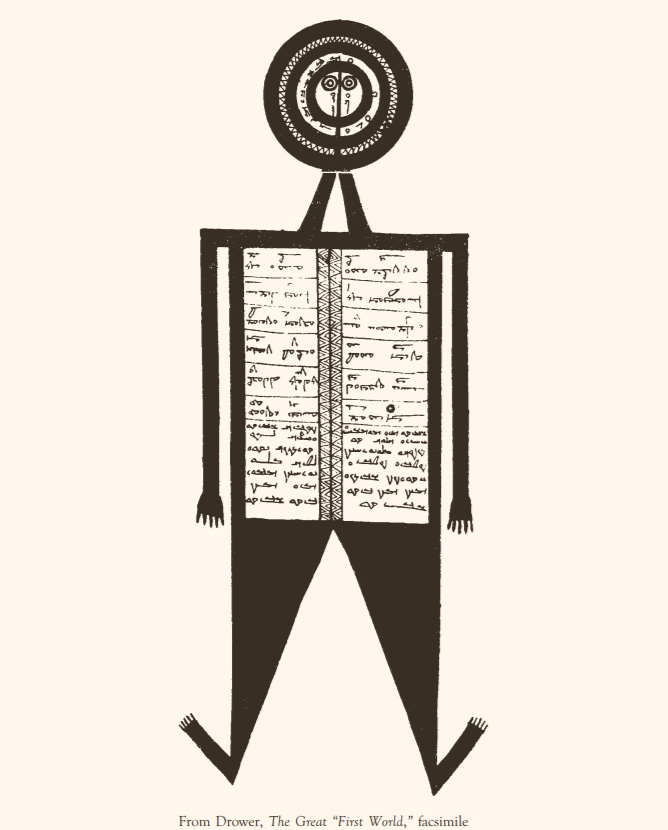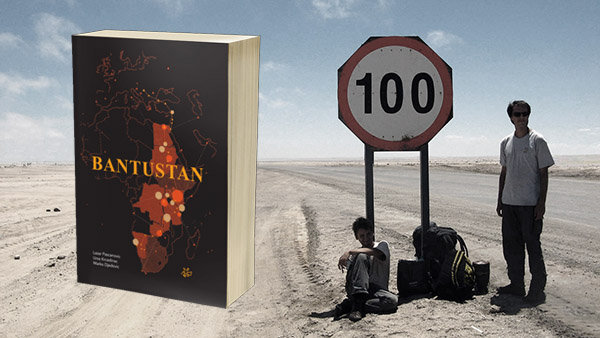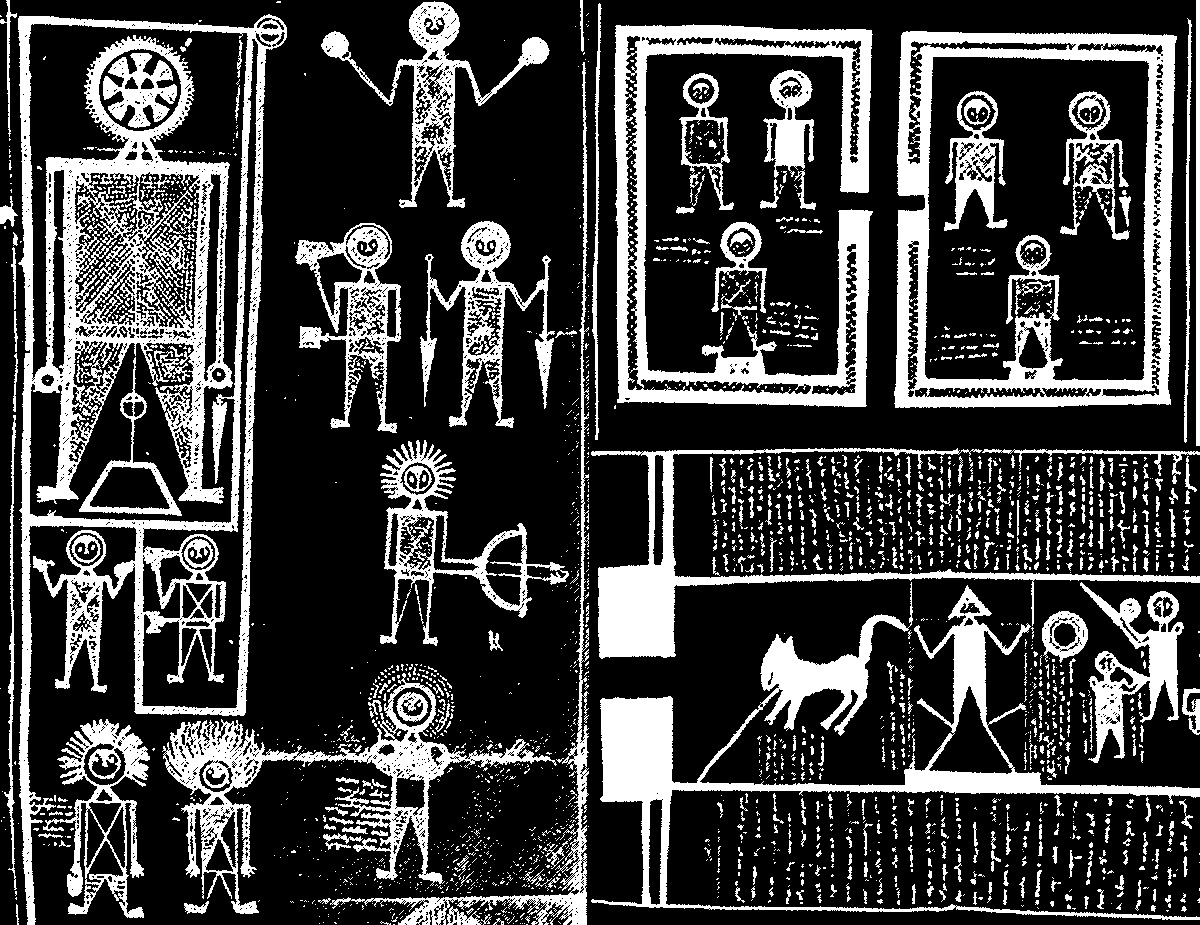 ART FROM THE MANDAEAN (SUBBA) HOLY MANUSCRIPT
ART FROM THE MANDAEAN (SUBBA) HOLY MANUSCRIPT
Mandaeans are the adherents of Mandaeism, a gnostic religion that originated in Mesopotamia in the first tree centuries CE. The majority of Mandaeans today live in Iraq and Iran, and speak a dialect of the Eastern Aramaic language. As their religion has always been secretive and their society very private, most of the historical accounts of the Mandaean religion and culture come from outsiders, and are thus often superficial, biased and incorrect. In her book “The Mandaeans of Iraq and Iran, their Cults, Magic Legends and Folklore”, published in 1937, British cultural anthropologist Ethel Stefana Drower tried to offer a systematic, balanced account of Mandaean culture. Ethel managed to procure the manuscript of Diwan Abatur, a Mandaean religious text written on a scroll. The translation of Diwan Abatur was published in 1950. Here are several excerpts from her 1937 book, followed by the preface to the 1950 book and selected illustrations from Diwan Abatur.
In Mandaean legends, as well as in those of India and Persia, one finds perpetual reference to wandering dervishes, the wanderers who set out in search of intellectual and spiritual peace.
*
In the following pages an attempt is made to relate what the author has seen, heard, and observed of the Mandaeans of Iraq and Iran. of Iraq and Iran. Observations were made over a number of years and furnish a considerable body of new evidence as to their customs, beliefs, cults, and magic. This evidence, we submit, is useful, not only to the student of anthropology, folk-lore, and ethnology, but to students of the history of religions, for the Mandaeans are what the doctor calls a case of arrested development. Their cults, which are regarded by them as more sacred than their books, and older, have been tenaciously retained; their ritual, in all its detail, most carefully preserved by a priesthood who regard a slip in procedure as a deadly sin. Segregated since the coming of Islam from those amongst whom they dwell by peculiarities of cult, custom, language, and religion, they have kept intact and inviolate the heritage which they had from their fathers.
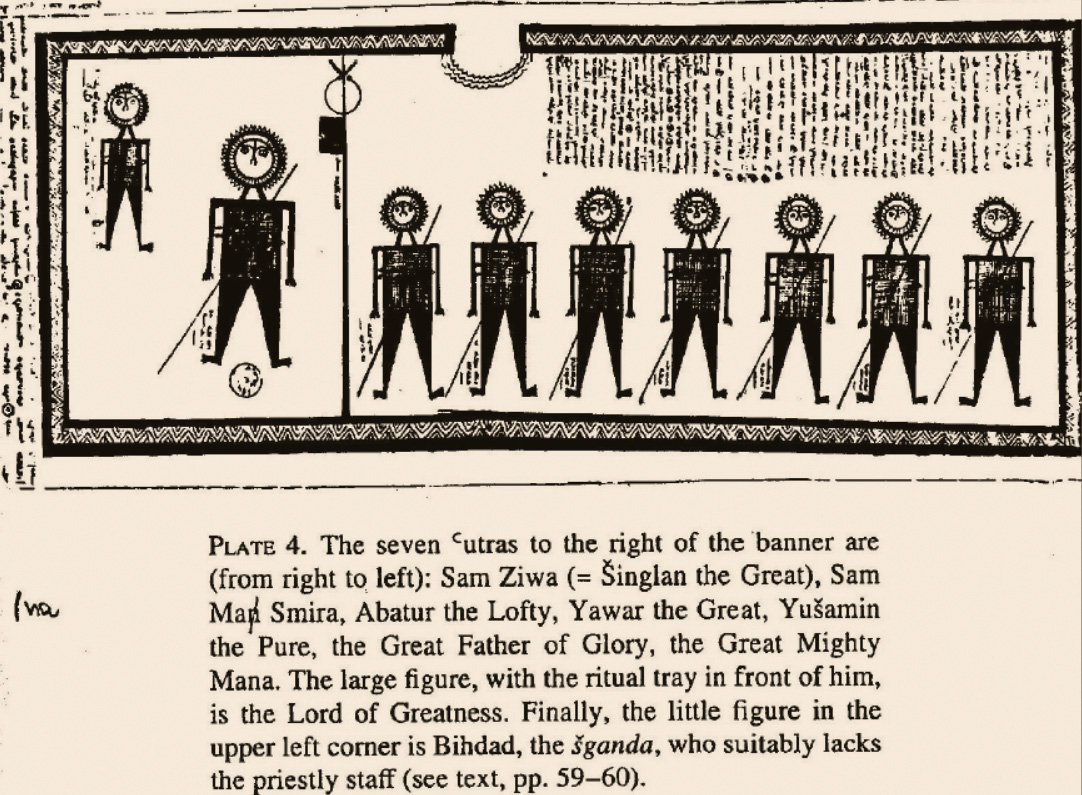
Mandaeans do not adore the heavenly bodies, but they believe that stars and planets contain animating principles, spirits subservient and obedient to Melka d Nhura (the King of Light), and that the lives of men are governed by their influences. With these controlling spirits are their doubles of darkness. In the sun-boat stands the beneficent Shamish with symbols of fertility and vegetation, but with him is his baleful aspect, Adona, as well as guardian spirits of light. The Mandaeans invoke spirits of light only, not those of darkness. All Mandaean priests are at the same time astrologers.
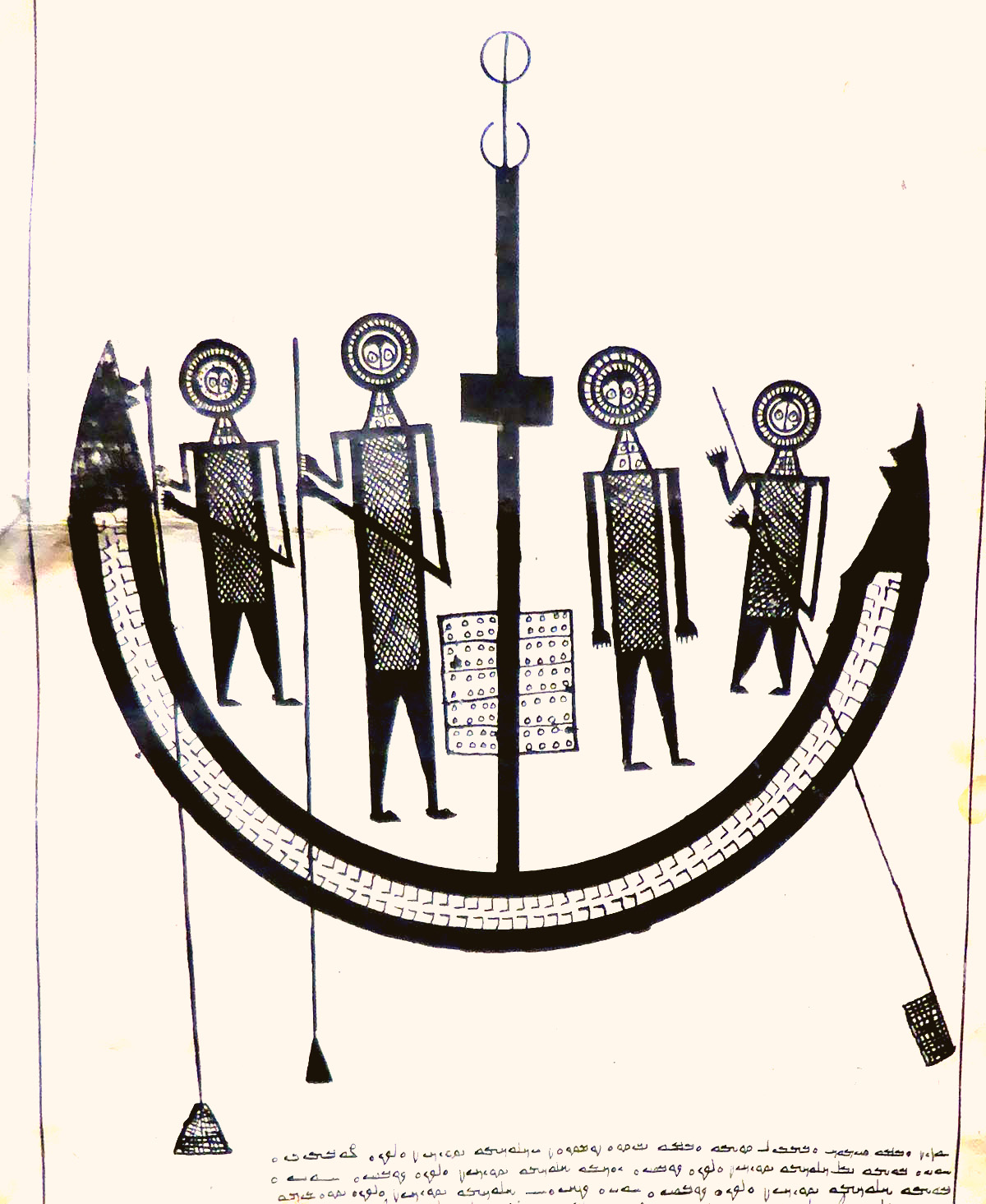
In the sun-boat stands the beneficent Shamish with symbols of fertility and vegetation, but with him is his baleful aspect, Adona, as well as guardian spirits of light.
The great alluvial plains of the Tigris and Euphrates lie between the Far East and Near East and in constant contact with both. From earliest times, highroads have run from the uplands of Iran, from the steppes of Asia, from the deserts of Arabia, from the plains of India, through what is now modern Iraq, to the Mediterranean seaboard. From the first its inhabitants have been subject to influences from all quarters of the civilized globe and ruled by race after race. There could be no better forcing ground for syncretistic thought. Babylonia and the kingdoms of Persia and Media offered natural conditions favourable to the growth of religious conceptions compromising between ancient traditions and cults, and ideas which had travelled from the old civilization of China by way of the Vedic philosophers of India ideas whichspiritualized, revived, and inspired man's belief in the immortality of the soul, its origin in the Divine Being, and the existence of beneficent ancestral spirits. Moreover, in the five centuries before Christ, there was a steady infiltration of Jewish, Egyptian, Phoenician, and Greeki nfluences into Babylonia. Before the Captivities, Jewish communities of traders and bankers established themselves in the land of the two rivers, while mercenaries and merchants passed to and fro between the Far East and the seaboards of Egypt, Phoenicia, and Greece.
Speculation in the West is mostly conducted from a chair: the adventurer into the realms of thought goes no farther than the laboratory or the study. In the East, seekers after truth were peripatetic : their intellectual vagabondage was physical as well.
The soldier and the merchant, though they contributed as intermediaries in the exchange of ideas, could never, however, have been more than passive 'carriers' of religious thought. In Mandaean legends, as well as in those of India and Persia, one finds perpetual reference to wandering dervishes, the wanderers who, like Hirmiz Shah in the Mandaean story, like Gautama the Buddha in India, or, in medieval times, Guru Nanak, set out in search of intellectual and spiritual peace. Speculation in the West is mostly conducted from a chair: the adventurer into the realms of thought goes no farther than the laboratory or the study. In the East, seekers after truth were peripatetic : their intellectual vagabondage was physical as well. It is certain that where the merchant penetrated, religious wanderers followed; travelling philosophers, ranging from China to India, Baluchistan, and Persia, and from Persia and Iraq to the Mediterranean, using the passes of Kurdistan and the waterways of Iraq.
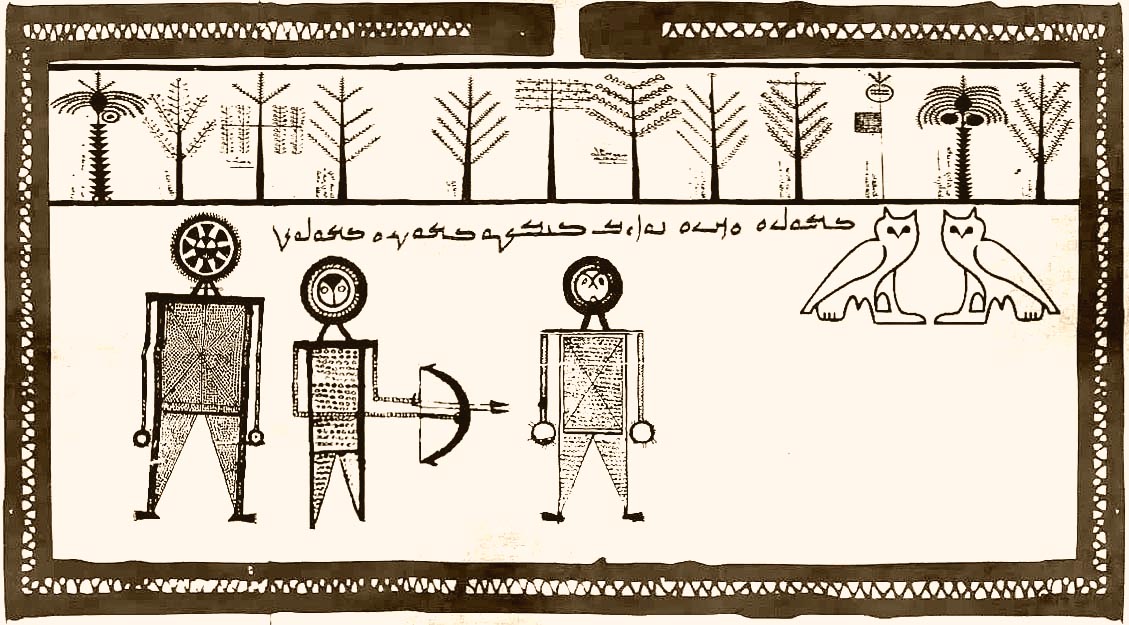
The Oriental loves metaphysical argument and seeks it: the higher his type, the more addicted he is to this form of mental exercise, and the readier to listen to the opinions of a guest. The result, a leaven of unorthodoxy amongst the intellectual, eventually spread to the masses, first, possibly, as secret heresies, and then as new forms of religion. Here lies the importance of the Mandaeans. Extremely tenacious, while adopting the new at some far distant syncretistic period, they also conserved the old so religiously and faithfully that one can disentangle the threads here and there, and point to this as Babylonian, to that as Mazdean, to this as belonging to a time when animal flesh was forbidden, to that as suggesting a phase when zealous reformers endeavoured to purge out some ancient and inherent beliefs. At such a period as the last-named, the scattered religious writings of the Mandaeans were gathered together and edited. One may surmise that the editors and collectors were refugees, sophisticated priests who, returning to peaceful communities in Lower Iraq, were scandalized at their incorrigible paganism. The emended writings breathe reform and denunciation.
The core or nucleus, of the Mandaean religion, through all vicissitudes and changes, is the ancient worship of the principles of life and fertility. The Great Life is a personification of the creative and sustaining force of the universe, but the personification is slight, and spoken of always in the impersonal plural, it remains mystery and abstraction. The symbol of the Great Life is 'living water', that is flowing water, or yardna. This is entirely natural in a land where all life, human, animal, and vegetable, clings to the banks of the two great rivers Tigris and Euphrates. It follows that one of the central rites is immersion in flowing water.
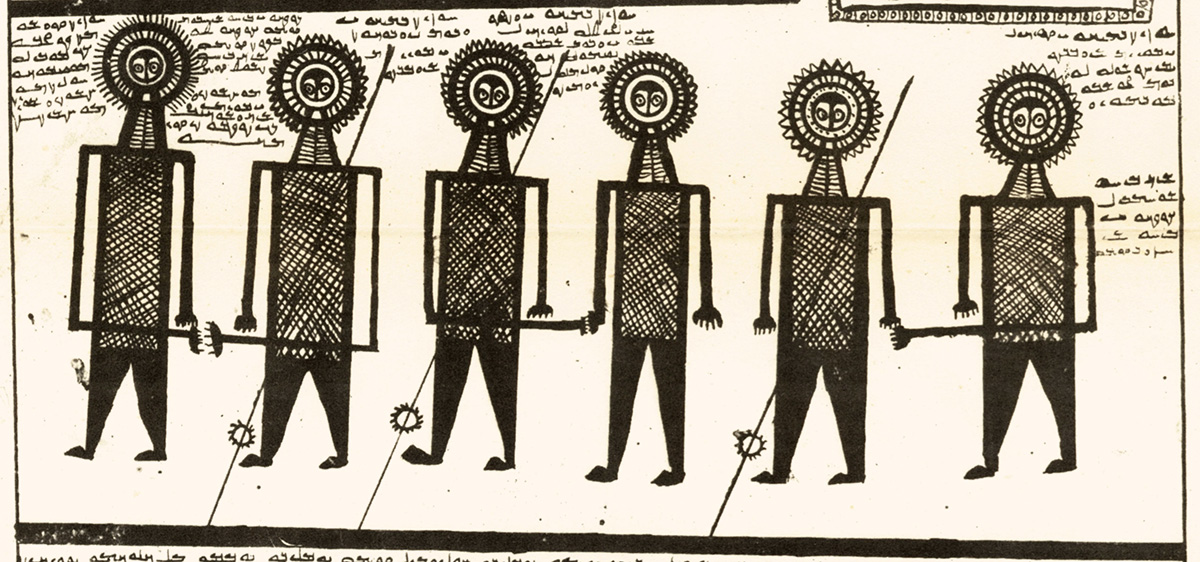
The second great vivifying power is light, which is repres ented by personifications of light (Melka d Nhura and the battalions of melki or light spirits), who bestow such light-gifts as health, strength, virtue, and justice. In the ethical system of the Mandaeans, as in that of the Zoroastrians, cleanliness, health of body, and ritual obedience must be accompanied by purity of mind, health of conscience, and obedience to moral laws. This dual application was characteristic of the cults of Anu and Eain Sumerian times and Bel and Ea in Babylonian times, so that, if Mandaean thought originated or ripened under Iranian and Far Eastern influences, it had roots in a soil where similar ideals were already familiar and where ablution cults and fertility rites had long been in practice.
The third great essential of the religion is the belief in the immortality of the soul, and its close relationship with the souls of its ancestors, immediate and divine. Ritual meals are eaten in proxy for the dead ; and the souls of the dead, strengthened and helped, give assistance and comfort to the souls of the living.
The appellation 'Subba' (singular Subbi) is a colloquial form which this people accept as referring to their principal cult, immersion; but the more formal name of their race and religion, used by themselves, is Mandai, or Mandaeans. Arab authors have sometimes confounded the Mandaeans with the Majus, or Magians, and not without reason, since
the cults are similar. Travellers in the East were wont to refer to them as 'Christians of St. John', and Europeans who have come to Iraq since the Great War know them as 'the Amarah silverworkers'. As the community is small and peace-loving, with no political aspirations, it has no place in history beyond the occasional mention of its existence, and the record that some of the most brilliant scholars of the early Moslem Caliphate were of its way of thought.
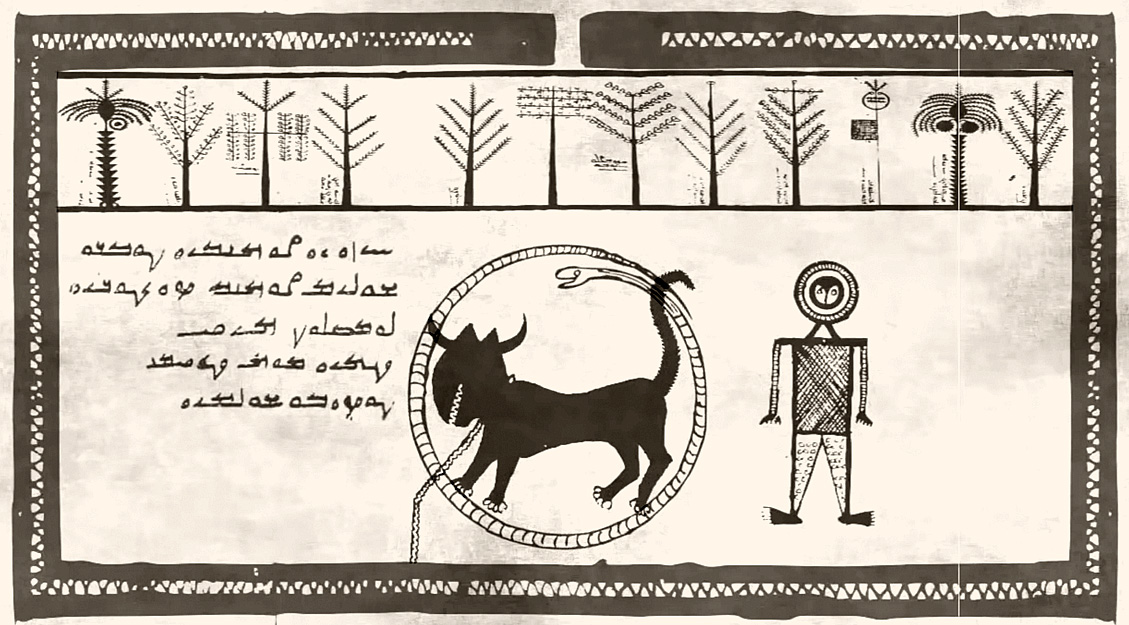
Today, the principal centres of the Subba are in Southern Iraq, in the The Mandaeans (or Subba) of Iraq and Iran marsh districts and on the lower reaches of the Euphrates and Tigris ; in the towns of Amarah, Nasoriyah, Basrah, at the junction of the two rivers at Qurnah, at Qal'at Salih, Halfayah, and Suq-ash-Shuyukh. Groups of them are found in the more northerly towns of Iraq: Kut, Baghdad, Diwaniyah, Kirkuk, and Mosul all have Subbi communities of varying size. The skill of the Subba as craftsmen takes them far afield, and Subbi silver-shops exist in Beyrut, Damascus, and Alexandria. In Persia the Mandaeans were once numerous in the province of Khuzistan, but their numbers have diminished, and the settlements in Muhammerah and Ahwaz along the banks of the Karun river are not so prosperous or so healthy as those in Iraq.
Like the followers of other secret religions, the Mandaeans, when talking to people of another faith, accentuate small points of resemblance between their beliefs and those of their hearers. To inquirers they will say, 'John is our prophet like Jesus' (or 'Muhammad', as the case may be) 'is yours'. I soon found that John the Baptist (Yuhana, or Yahya Yuhana) could not with accuracy be described as 'their prophet' ; indeed, at one time I was tempted to believe that he was an importation from the Christians. I became gradually convinced, however, that he was not a mere accretion, and that he had real connexion with the original Nasurai, which was an early name given to the sect. Mandaeans do not pretend that either their religion or baptismal cult originated with John; the most that is claimed for him is that he was a great teacher, performing baptisms in the exercise of his function as priest, and that certain changes, such as the diminution of prayer-times from five to three a day, were due tohim. According to Mandaean teaching, he was a Nasurai; that is, an adept in the faith, skilled in the white magic of the priests and concerned largely with the healing of men's bodies as well as their souls. By virtue of his nasirutha, iron could not cut him, nor fire burn him, nor water drown him, claims made to-day by the Rifa'i darawish.
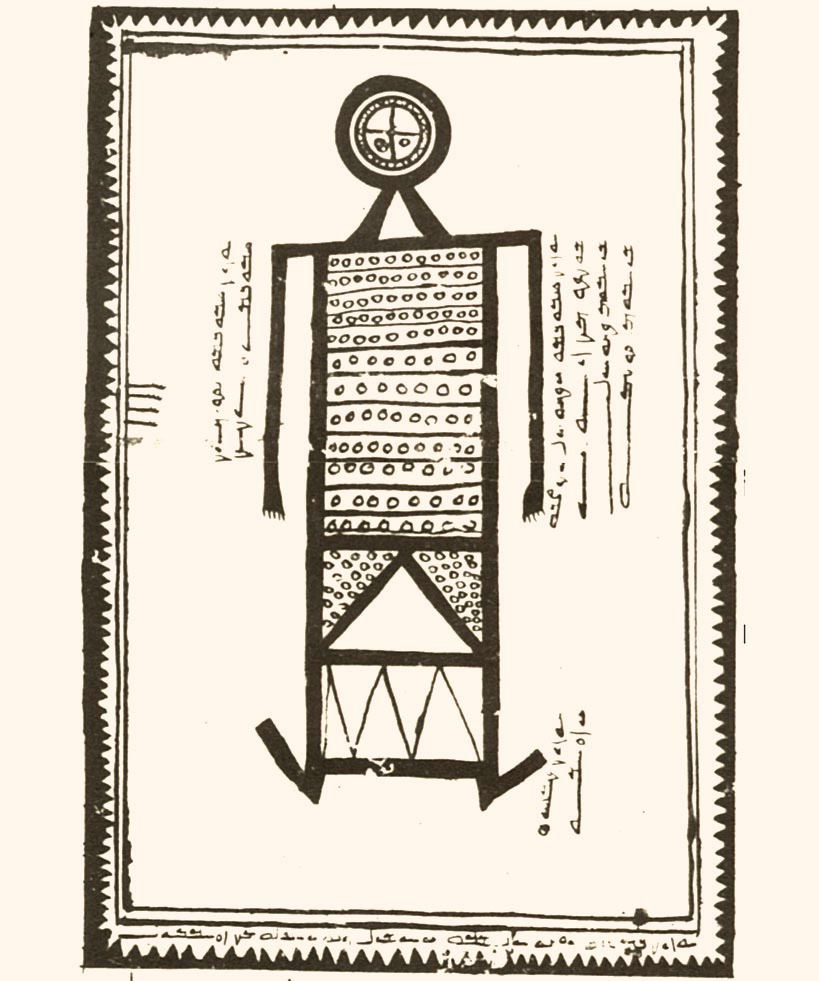
Jesus too, according to Mandaean theologians, was a Nasurai, but he was a rebel, a heretic, who led men astray, betrayed secret doctrines, and made religion easier (i.e. flouted the difficult and elaborate rules about purification). The references to Christ (Yshu Mshiha) are, in fact, entirely polemical, and for the most part refer to the practices of Byzantine Christianity which awake horror in Mandaeans, such as the use of 'cut-off' (i.e. not flowing) water for baptism, and the celibacy of monks and nuns. The Haran Gawaitha (D.C. 9) mentions the establishment of Christian communities on Mount Sinai. In the cults, Jesus and John are both unmentioned.
Jesus too, according to Mandaean theologians, was a Nasurai, but he was a rebel, a heretic, who led men astray, betrayed secret doctrines, and made religion easier
During the British occupation and the early days of the mandate, as one walked between the Subbi silver-shops in River Street, Baghdad, one sometimes saw a board announcing the proprietor to be a 'St. John Christian', but these, now that Iraq has a national government, have disappeared.
*
The religious writings of the Mandaeans have never been printed. Down through the centuries, priestly scribes who derived part of their income from such labours copied them by hand for pious Mandaeans who believed the possession of holy books ensured for them protection from evil in this world and the next. Few laymen could, or can, read or write Mandaean ; literacy is mostly confined tothe priestly class. Laymen have complained to me, 'The priests will not teach us to read or write (Mandaean)'. The reason is a practical one : if laymen knew these arts, the priest's prestige would suffer; moreover, writing of talismans and charms would cease to be a priestly monopoly. Mandaeans have nothing to compare with the Gospels which, in their claim to recount the life and teachings of Jesus, have a certain unity, or of Manichaean books containing the actual doctrines of Mani. The Mandaean religion has no 'founder', indeed, from the critical standpoint, few religions can be said to have 'founders' or to be 'new'.
*
In the year 1622, a Carmelite father, R. P. Ignatius, was despatched by the propaganda in Rome to the Nestorians of Mesopotamia. Whilst in Basrah, he met with members of a sect who, as is their custom when dealing with Christians, told him that their prophet was St. John the Baptist. From them he obtained a roll illustrated by curious drawings of beings which they described as angels or demons. On his return to Rome, Ignatius published a treaatise in Latin about this interesting group of "heretics" whose ceremonies were at once like and unlike those of Oriental Christians, and whose creed was so "strangely perverted and pagan".
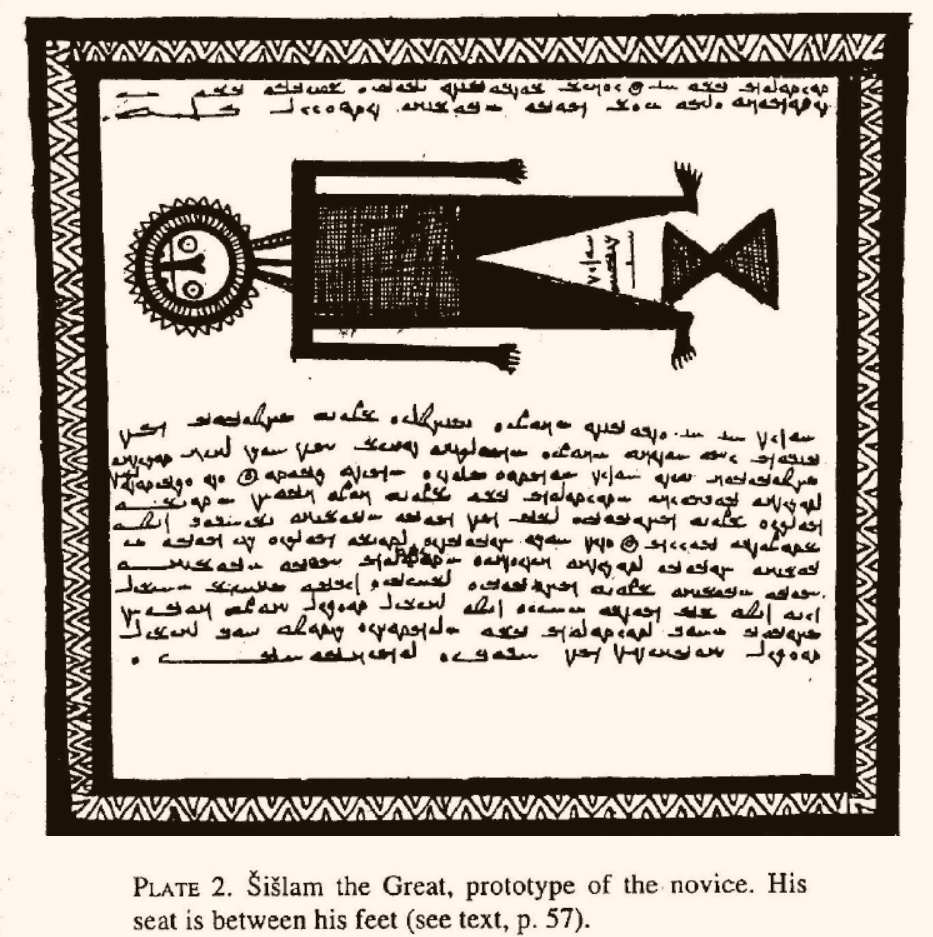
The roll found its way into the Museo Borgiano in Rome, where Julius Euting was it in 1879. Euting was deeply interested and persuaded a friend, Dr. B. Pfortner, to photograph the manuscript. This photograph was published in Strasbourg in 1904, under the title "Mandaischer Diwan nach photographischer Aufnahme, von Dr. B. Pfoertner mitgeteilt von Julius Euting". It was not translated.
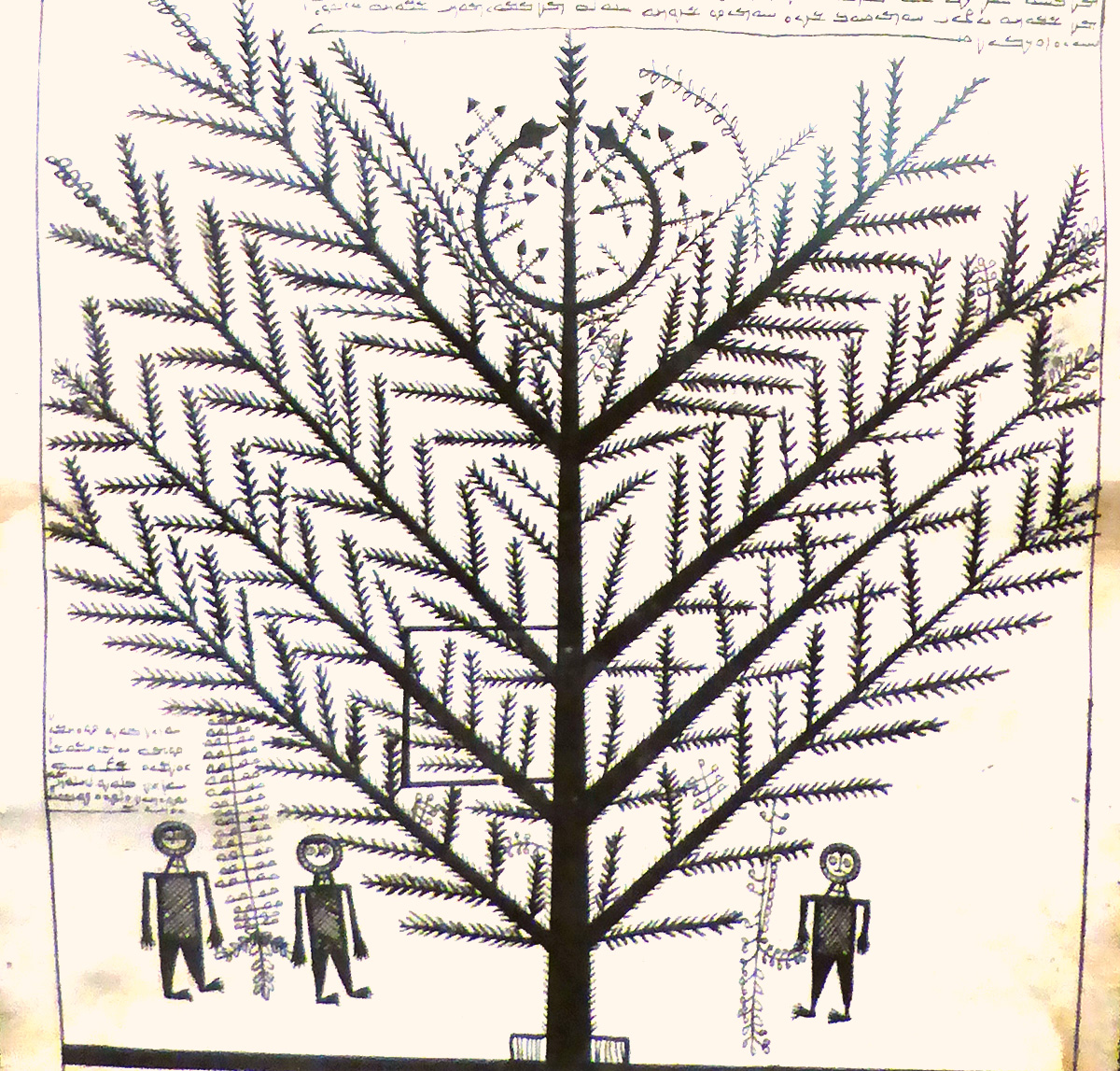
Early in my dealings with Mandalean priests in the marhes of Lower Iraq, I was shown a copy of Diwan Abatur and after long negotiations, it was arranged that I should have the roll that I had seen after its owner had copied it for himself. The copy was made with skill and care, and the original sent to me. Judging by the paper and other indications, my roll, D.C. 8 of my collection, is about the same date as the manuscript taken to Rome by Ignatius. Neither the Borgian manuscript nor mine is dated, although each has a long list of copyists, showing that the text was an ancient one. A considerable part of the beginning is missing from the Roman roll, but I have been able to compare the remainder of the Borgian manuscript with my own. I discovered no other copy of the text in Iraq, although, of course, other priests may have concealed possession of a copy since, in spide of the inferior and childish quality of the composition and mistakes due to constant recopying, it is looked upon as a precious and holy book.
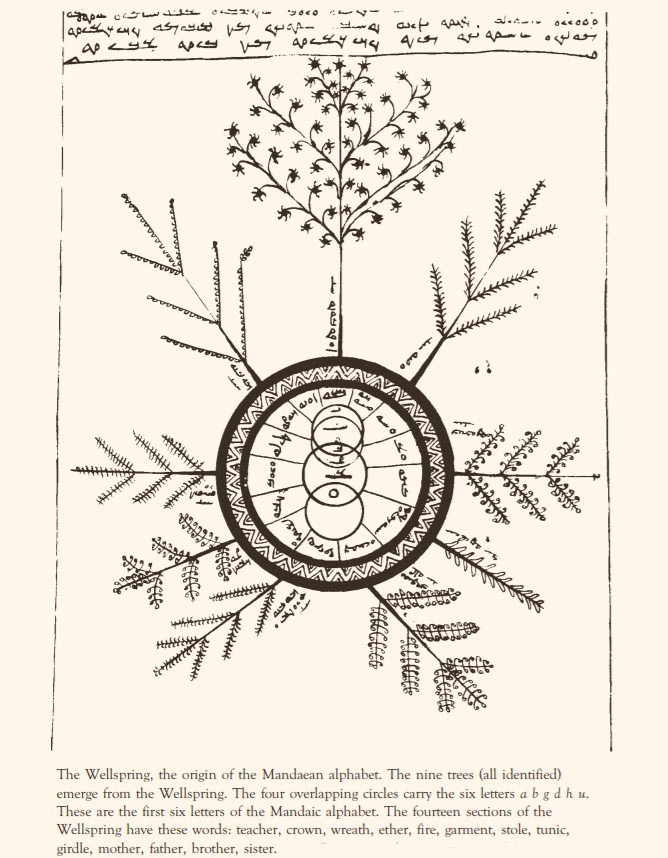
The illustrations, archaic and suggestive of a Cubist form of art, are identical in both manuscripts. The Subba are clever artists and craftsmen, but tradition dictates that representation of celestial and infernal beings must follow a certain pattern. Drawings like these in the Diwan Abatur are found in the ritual rolls, so that we have here no childish inability to portray a subject, but deliberate convention of a very individual order. A Subbi smith who drew naturalistic pictures for engraving on his silverwork, when asked by me to draw pictures of some celestial beings, produced similar odd geometrical-looking designs.
